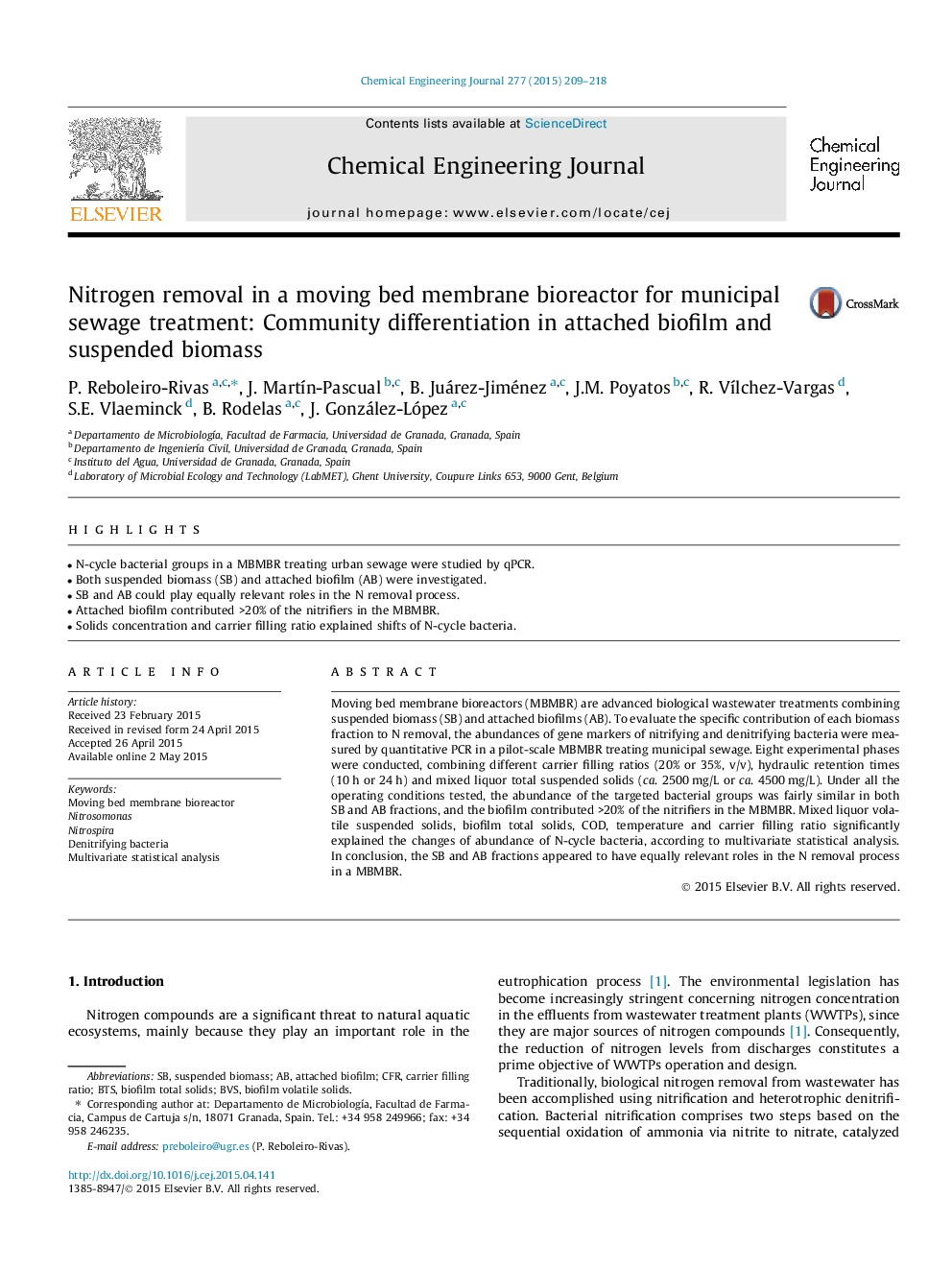| Article ID | Journal | Published Year | Pages | File Type |
|---|---|---|---|---|
| 146314 | Chemical Engineering Journal | 2015 | 10 Pages |
•N-cycle bacterial groups in a MBMBR treating urban sewage were studied by qPCR.•Both suspended biomass (SB) and attached biofilm (AB) were investigated.•SB and AB could play equally relevant roles in the N removal process.•Attached biofilm contributed >20% of the nitrifiers in the MBMBR.•Solids concentration and carrier filling ratio explained shifts of N-cycle bacteria.
Moving bed membrane bioreactors (MBMBR) are advanced biological wastewater treatments combining suspended biomass (SB) and attached biofilms (AB). To evaluate the specific contribution of each biomass fraction to N removal, the abundances of gene markers of nitrifying and denitrifying bacteria were measured by quantitative PCR in a pilot-scale MBMBR treating municipal sewage. Eight experimental phases were conducted, combining different carrier filling ratios (20% or 35%, v/v), hydraulic retention times (10 h or 24 h) and mixed liquor total suspended solids (ca. 2500 mg/L or ca. 4500 mg/L). Under all the operating conditions tested, the abundance of the targeted bacterial groups was fairly similar in both SB and AB fractions, and the biofilm contributed >20% of the nitrifiers in the MBMBR. Mixed liquor volatile suspended solids, biofilm total solids, COD, temperature and carrier filling ratio significantly explained the changes of abundance of N-cycle bacteria, according to multivariate statistical analysis. In conclusion, the SB and AB fractions appeared to have equally relevant roles in the N removal process in a MBMBR.
